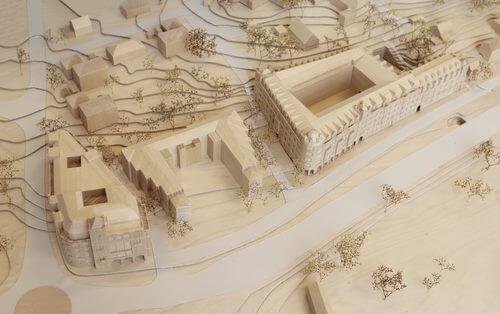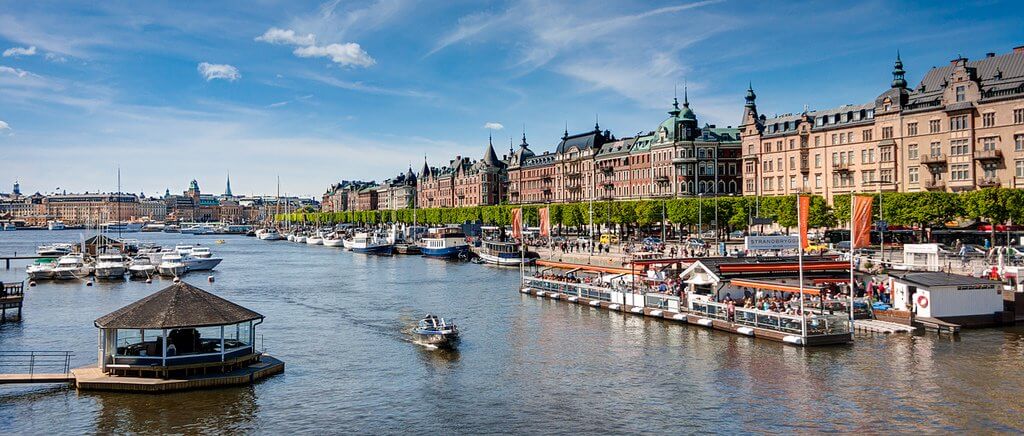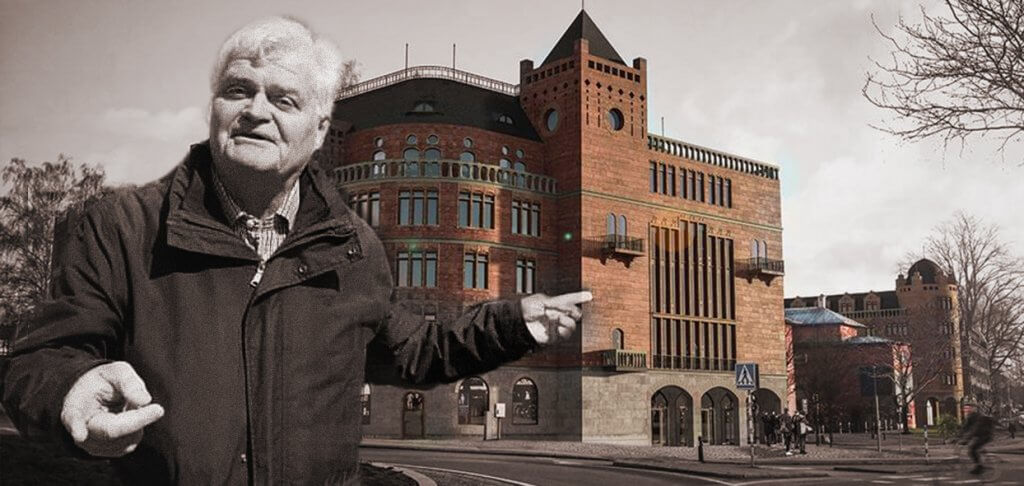News and Articles › Architecture
Music draws tears more quickly than a painting. Tears must be held back. The eyes are needed to see.
— Odd Nerdrum, kitsch painter
Top list
View the entire list
Björn Sundeby is a Swedish businessman of the old school. His IT company is not listed on any stock exchange, which means that he has full control over the future of his company and more importantly: he is currently constructing a vast and kitschy office building in Vaxjö – his home town. Sundeby’s big plan for this small Swedish town of 100.000 inhabitants could possible be the long awaited change of direction.
Challenging the monopoly
The journey has not been easy. In the Kasper Salin jury, which is the most important architecture-prize in Sweden, Petra Gipp expressed her displeasure with Sundeby’s plans, claiming that “the architect’s task is to interpret the present time.” American architect Robert McCarter said the following to a Swedish magazine: “Deeply depressing that this is being built in Sweden.”
Since the controversial construction plans were announced in 2015, the debate has been dominated by architects criticising its style and validity as a 21st century building. City developers have also been sceptical of its size, even though they just recently bombarded downtown in Växjö with more brutalist architecture. In January this year, the local community finally decided to grant Sundeby the permission to pursue his plans for the city.
I sat down with Björn Sundeby to talk about his new building.
90% of the architects are against me — they want me to build something for our time, so there’s been some conflict.Björn Sundeby, swedish businessman

Plan for the buldings
ÖSN: Congratulations on your project and that you are finally able to realize the building plans.
BS: Yes, the detailed planning is ready, but we haven’t received the final go-ahead yet, though all the political parties share my view. 90% of the architects are against me — they want me to build something for our time, so there’s been some conflict.
ÖSN: It is interesting that everyone is excited, everyone but the architects…
BS: Exactly. The Architects are the “experts” and we are supposed to abide by their opinion, but who are the experts really?
I have lived in Switzerland for 20 years. My company has 400 employees and we are completely self-financed. We build with our money — not tax money. The façade, the staircases and all the doors for the offices and the apartments will be built in a classical manner.
ÖSN: Apart from expanding your company — is the building a gift to Växjö?
BS: Yes, definitively. I am not sure whether this will be profitable or not, so it’s a big risk. But if you consider life expectancy, my building will be cheaper than other buildings. We have to convince people to start thinking long-term. I am not an environmentalist, but a country such as Rwanda astonished me. They have banned all use of plastic material. You can’t even carry your shoes in a plastic bag without being fined. Plastic is cheap, but the long-term cost of it is not. However, I don’t look at this with an environmentalist’s eyes, I see it with a purely capitalist eye: it’s cheaper if you do it the right way from the beginning.
A positive development
Besides painting, the art of architecture has arguably been abandoned more than any other discipline by Kantian scepticism. Classical villas are erected in many parts of the world, but public buildings and office complexes are — almost without exceptions — ugly functional shoeboxes made out of glass and concrete.
Sterile constructions affect people’s everyday life much more than paintings. But people are getting tired of this taste monopoly. The British movement Architectural Revival has 120 000 followers on Facebook, and the Swedish Arkitekturuppröret (The Architecture revolt) has 35 000 followers only in Scandinavia.
The houses are like paintings, but you don’t need to own them; it gives you energy to just walk there…
Björn Sundeby, swedish businessman

Before and after: Björn Sundeby’s new buildings will include his offices, apartments and stores.
ÖSN: The inspiration for this bulding was Strandvägen in Stockholm?
BS: Yes, it was. I love Strandvägen. I fully understand that August Strindberg took his straw there to be inspired. The houses are like paintings, but you don’t need to own them; it gives you energy to just walk there… and that’s the wonderful thing, if I can create that energy in Växjö… it might be the case that my business won’t exist 500 years from now; we cannot know, but the buildings will stand!
ÖSN: Don’t you think that if the architects who drew Strandvägen believed in the spirit of time, they wouldn’t have made such a beautiful street?
BS: But Strandvägen was in fact built for its time..?
ÖSN: Yes, but the late 19th century was a time dominated by style emulation. Strandvägen is a great example — they have copied from all of history. Modern architects claim that their predecessors drew for their time, but they didn’t: they simply built what they wanted to build.
BS: That is a good reflection, absolutely.

Strandvägen (Beach street) was finished just before the World Fair in Stockholm 1897.
Published on Monday, June 4th, 2018





